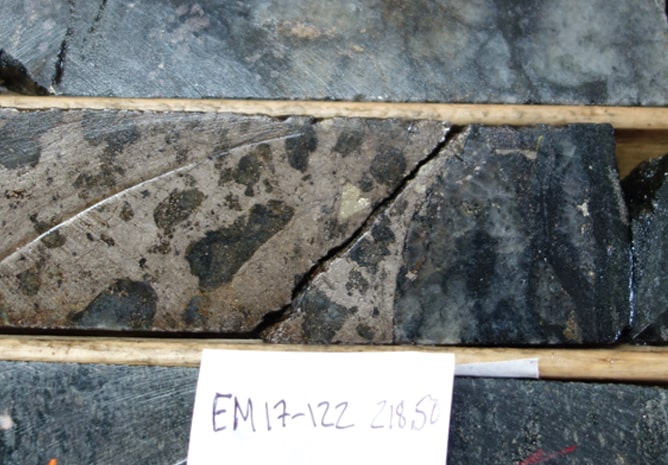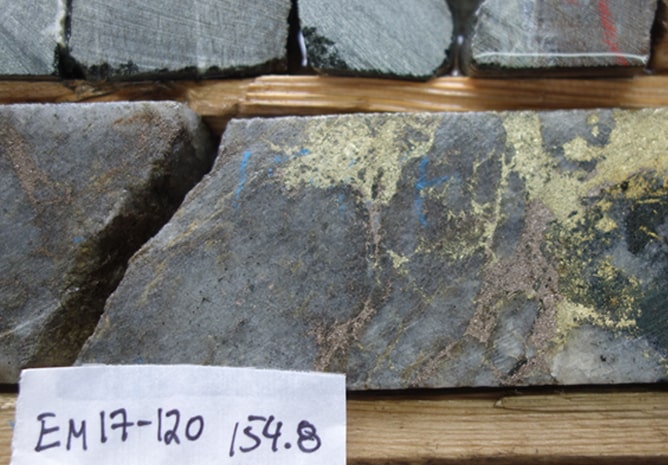Geological Model
Genetic models for the Eastmain Gold Deposit have ranged from a synvolcanic and stratabound deposit hosted in a recrystallized chert horizon (Boldy et. al. 1984) to an epigenetic, orogenic deposit that is structurally controlled in a silicified shear zone (e.g. Tourigny, 1989). Recent geological work and research has led to a preferred syngenetic model although there is no doubt that it has been extremely deformed. The Eastmain Gold Deposit is a copper-gold-silver, sulphide-rich deposit consisting of three high-grade, gold-rich zones known as the “A,” “B” and “C” Zones. Eastmain Resource’s exploration focus at Eastmain Mine was on the expansion of known Mineral Resources in the three zones and around the historic mine infrastructure and discovery of additional deposits along a regional 10 km long Mine Trend. Previous exploration of the Property confirmed surface copper-gold-silver mineralization in rocks and soils within the key mine horizon extending four km northwest from the Eastmain Mine Gold Deposit to the Julien, Hillhouse, Suzanna and Michel Targets. These well-defined targets present Eastmain Mine Gold Copper metal signature rock outcrops within the extension of the Mine Trend and along secondary parallel units within the Mine Series.
Mineral Resoruce
On the 24th May 2023 Benz Mining released an Updated Independent Mineral Resource Estimate (MRE) in accordance with NI 43-101 guidelines defined on Eastmain Project at a 2.5 g/t Au cut-off:
| Classification |
Tonnes (M) |
Au (g/t) |
Au (koz) |
| Indicated |
1.3 |
9.0 |
384 |
| Inferred |
3.8 |
5.1 |
621 |
Note: rounding errors apply


